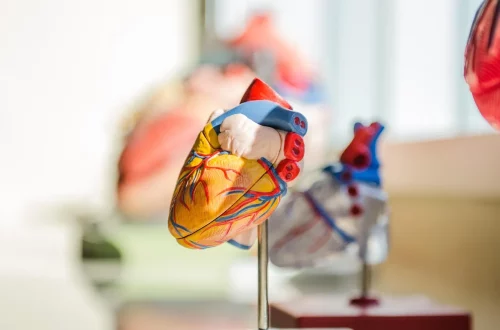
How Much Does a Human Head Weigh? Understanding the Facts
The human head is a complex and fascinating part of our anatomy, serving as the control center for the entire body. It houses vital organs such as the brain, eyes, ears, nose, and mouth, each playing crucial roles in our daily lives. The head is not just a physical structure; it is also a symbol of identity and expression. From the contours of the skull to the features of the face, every aspect contributes to our individuality.
Understanding the weight of the human head can reveal a lot about our biology and physiology. It is intriguing to think about how this relatively small part of our body can hold so much importance and functionality. The head contains bones, muscles, and tissues that work together seamlessly to facilitate a wide array of functions, from communication to digestion. This intricate arrangement also raises questions about how much these components weigh collectively.
As we delve into the specifics, it becomes clear that the weight of the human head can vary significantly among individuals, influenced by factors such as age, gender, and overall body composition. This article aims to explore the various aspects surrounding the weight of a human head, shedding light on its significance in both biological and practical contexts.
The Composition of the Human Head
To understand the weight of the human head, it is essential to first examine its composition. The head is primarily made up of the skull, which protects the brain and supports facial structures. The skull is composed of 22 bones, including the cranial bones that encase the brain and the facial bones that form the structure of the face.
Each of these bones has its own weight, contributing to the overall mass of the head. On average, the adult human skull weighs about 2.2 pounds (1 kilogram). However, this weight can differ based on various factors, including bone density and size.
In addition to bones, the head contains a significant amount of soft tissue, including skin, muscles, fat, and organs. The brain, which is the heaviest organ in the head, weighs approximately 3 pounds (1.4 kilograms) in adults. The weight of the brain can also vary slightly from person to person and is often influenced by factors such as age and health.
Muscles in the head, particularly those involved in facial expressions and chewing, also add to the overall weight. These muscles can vary in size and strength depending on an individual’s genetics and lifestyle choices, further contributing to the diverse range of weights observed in human heads.
Understanding the composition of the head is crucial for several reasons. It highlights the incredible complexity of our anatomy and how each component plays a role in daily functions. Moreover, it provides insight into why the weight of the head can vary and how this variation can influence overall health and well-being.
The Average Weight of a Human Head
When discussing the weight of a human head, it is important to consider the average figures. Generally, the average weight of an adult human head ranges from 10 to 11 pounds (4.5 to 5 kilograms). This average includes the combined weight of the skull, brain, and soft tissues.
In children, the weight of the head is proportionally larger compared to their body size. For instance, an infant’s head can account for a significant portion of their total body weight, which can be around 25% at birth. As children grow, their body proportions change, and the head accounts for a smaller percentage of their total weight.
Gender differences can also play a role in head weight. Studies have shown that, on average, male skulls tend to be heavier and larger than female skulls. This is attributed to overall differences in body size and muscle mass. However, it is essential to note that these averages are generalizations and can vary widely among individuals.
In addition to anatomical factors, external elements can influence the apparent weight of the head. For instance, factors such as hydration levels, muscle tone, and even age can affect how heavy the head feels. As people age, they may experience changes in muscle mass and bone density, which can impact the perceived weight of the head.
Understanding the average weight of the human head is not just a matter of curiosity; it has practical implications as well. For instance, in medical fields, knowing the typical weight can assist in diagnosing conditions related to head and neck injuries. Additionally, it can aid in ergonomic assessments, particularly in fields requiring heavy lifting or prolonged periods of head movement.
While we have established average weights for the human head, several factors can influence these figures. Firstly, genetics play a significant role in determining both the size and weight of an individual’s head. Different ethnicities and family lineages often exhibit variations in cranial shape and size, which can impact weight.
Another critical factor is age. As mentioned earlier, the weight of the head can change throughout a person’s life. In infants and children, the head is relatively larger in proportion to their bodies, whereas adults tend to have a more balanced ratio.
Health conditions can also significantly affect head weight. For example, conditions such as obesity can lead to increased fat deposits around the head and neck area, potentially increasing overall head weight. Conversely, certain medical conditions that lead to muscle atrophy or bone loss can result in a lighter head.
Lifestyle choices also contribute to variations in head weight. Regular exercise can strengthen the muscles in the neck and head, potentially affecting head posture and how heavy it feels. Diet plays a role as well; proper nutrition supports bone health and muscle mass, influencing overall head weight.
Environmental factors, such as altitude and climate, can also have subtle effects on head weight. For instance, individuals living at higher altitudes may experience changes in body composition due to lower oxygen levels, which can influence muscle and fat distribution.
Understanding these factors is essential for a comprehensive view of head weight. It highlights the complexity of human biology and the interplay between genetics, lifestyle, and health in determining the characteristics of our anatomy.
The Importance of Head Weight in Health and Medicine
The weight of the human head is not merely a statistic; it has significant implications in various fields, particularly in health and medicine. Understanding head weight aids in diagnosing and treating medical conditions related to head and neck injuries.
For instance, in the event of a traumatic injury, knowing the weight and structure of the head can help medical professionals assess the extent of damage and determine appropriate treatment plans. This information is also vital when considering surgical interventions, as surgeons must account for head weight and its distribution to ensure successful outcomes.
In physical therapy and rehabilitation, understanding head weight can influence treatment approaches. Therapists may design specific exercises to strengthen neck muscles and improve posture based on an individual’s head weight and distribution. This is particularly important for individuals recovering from injuries or surgeries that affect the head and neck area.
Furthermore, the concept of head weight extends into ergonomics. Occupational health professionals may analyze head and neck positions to minimize strain in individuals who perform repetitive tasks or spend long hours in front of screens. Understanding how head weight affects posture can lead to better workplace designs and practices, promoting overall health and productivity.
In summary, while the weight of the human head may seem like a trivial detail, it plays a crucial role in various medical and health-related fields. Its implications extend from diagnosis and treatment to ergonomics and rehabilitation, emphasizing the interconnectedness of our anatomy and health.
—
*Disclaimer: This article is for informational purposes only and should not be considered medical advice. For any health concerns or medical issues, please consult a qualified healthcare professional.*




